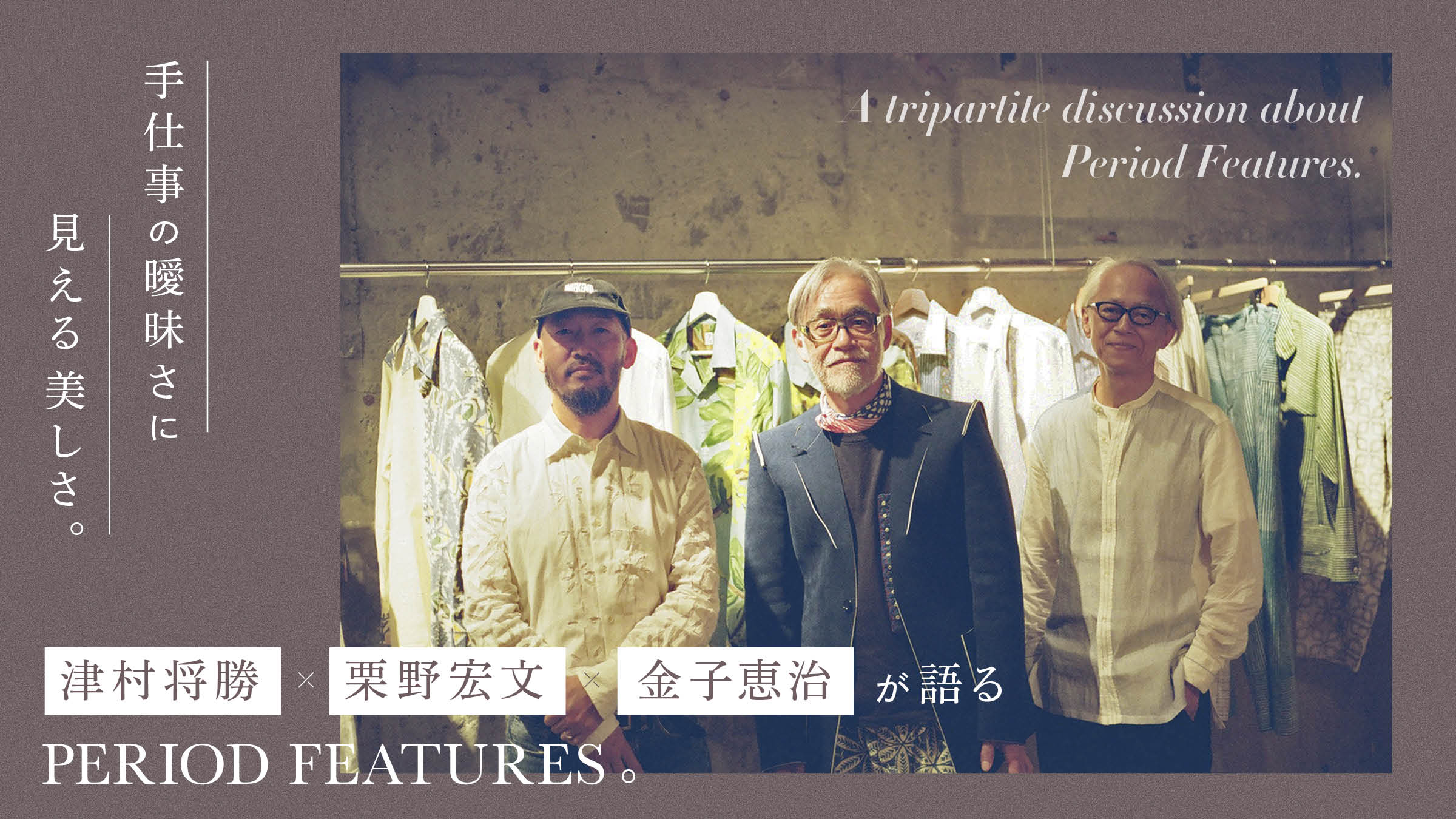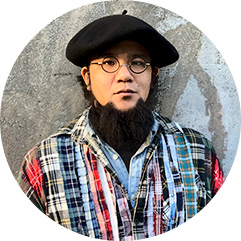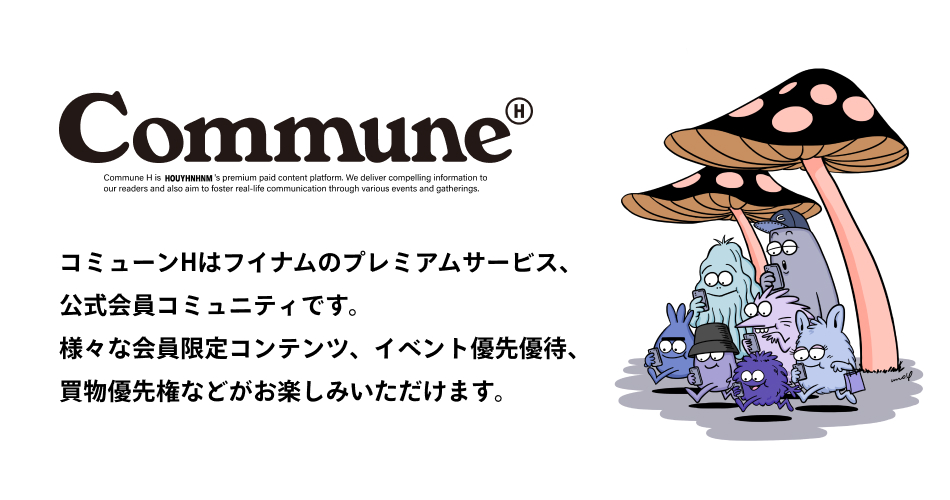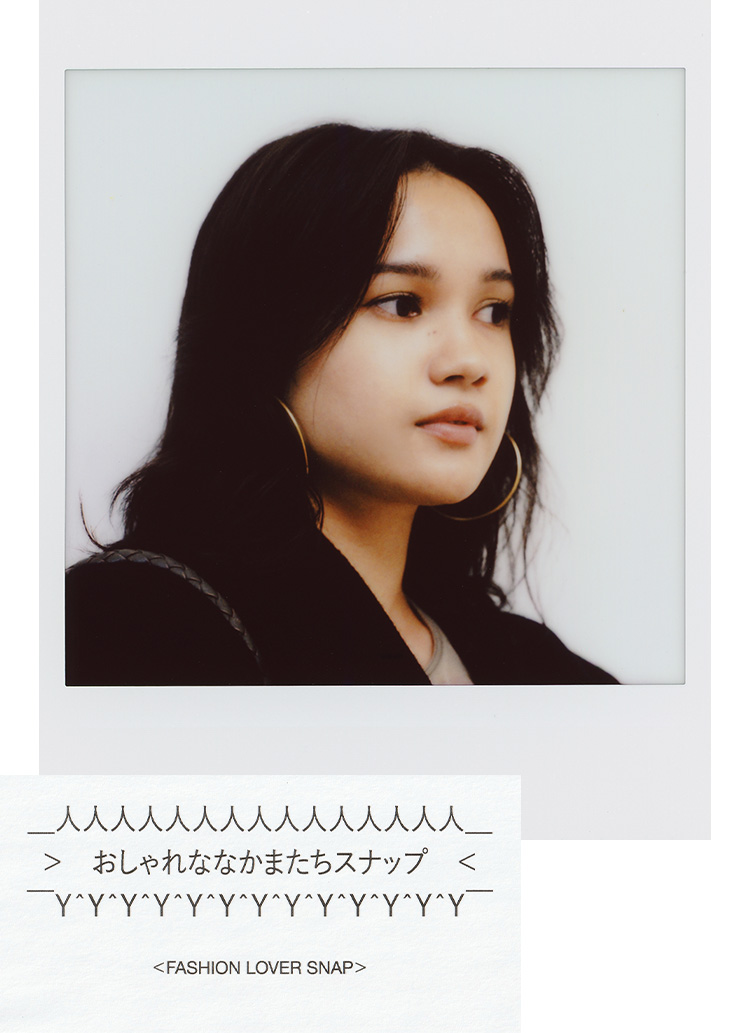Organize the technology and get it right. I feel like I'm part of that movement.

-Please tell us about the appeal of "Period Features" from your point of view.
Kurino:I am wearing a shirt from the first collection. If you tried to make these fine pleats in Japan or Europe, the price would be outrageous. It is only in India that this kind of clothing is possible. However, it is very difficult to handle such Indian techniques without making them look too much like folk art. Mr. Tsumura manages to get that just right. The collars are beautifully shaped and the stitching is beautiful. I am first of all attracted by the balance of the product as such. Also, after appearing in "POPEYE" and wearing all kinds of things, I met India. I am also personally attracted to Mr. Tsumura's history of doing such interesting things.
United Arrows" has a project to preserve Indian techniques, and the person in charge of the project says, "Indian handwork techniques will be lost if someone does not continue to commission work. As mechanization and modernization progresses and everything is incorporated into the logic of capitalism, the handiwork that deviates from that logic remains in each and every garment. You understand the excellence of Indian techniques, and you have continued to make things that machines cannot do, all by yourself. And to think that he is still able to wear clothes made 10 years ago. In a world inundated with words like "sustainable," it is this kind of effort that deserves the spotlight.

-New value is created by mixing local technology and culture with urban sensibilities. I think it is important to keep doing this in a positive way.
Kurino:I have also visited Ethiopia, which is famous for its organic coffee, which is highly valued. The local people say that organic coffee is the only way because they were too poor to buy pesticides. Once soil is treated with chemicals, it takes a long time to purify it. There are lands where chemicals were not used because there was no money, and the coffee that is produced there, or cotton in the clothing area, is the same. I think it is our job to think about how to deal with such things that exist in the world and put them into practice. There are things that money can move, but not Mr. Tsumura. He has done all this on his own. That is why I get the feeling that you put your life into it.
-Is Mr. Tsumura able to achieve this because he continues to visit India?
Tsumura:In my case, I am lucky. But India has its own way of doing things. The first time I made fabric, I made 20 patterns, and only two of them came out right. Even so, according to the Indian way of thinking, the craftsmen should be paid for their work. Each village has its own master. Each village has its own master. I negotiate with the master. The village craftsmen do the actual work. In such a system, everyone has a livelihood, and if they are not properly compensated, they cannot survive. It is a bit different from the common practice in Japan.
-Every village has different things to make.
Tsumura:There is a difference. For example, when weaving a kadi, when the weft thread is almost finished and needs to be changed to the next thread, they don't have the idea of wasting the thread, so they use it to the end and connect the next thread. Then the thread changes in the middle and the fabric becomes something else in the middle. Telling them to stop doing that doesn't work. Also they are obviously more excited after a meal or less excited when they have a bad day. They weave with a completely different tension each time, so the weaving is uneven. That is part of doing it by hand.

Kurino:That is what luxury is all about.
Tsumura:That's the beauty of it. I like the sweet side of clothes. Like the Japanese Mingei (folk art) movement or the French Arts and Crafts movement, they organize technology and make it into something proper. I feel like I'm in the middle of such a movement.









